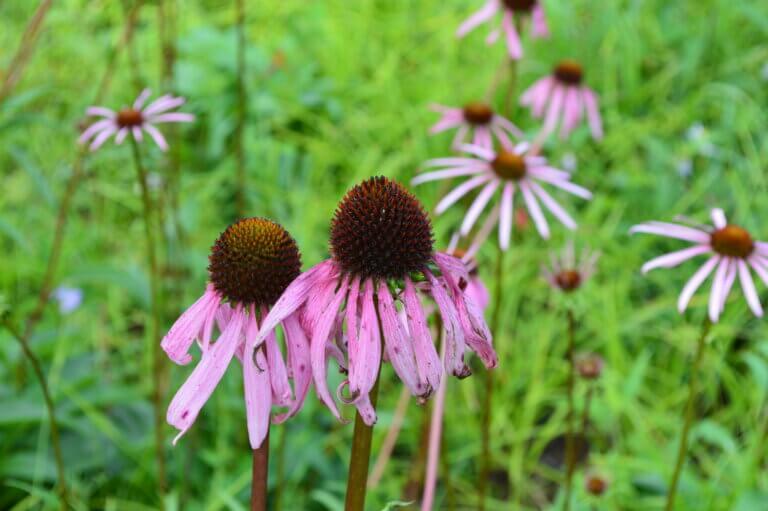
Section Branding
Header Content
The Smooth Coneflower Makes A Comeback In Georgia, Southeast
Primary Content

The smooth coneflower, a droopy, lavender-pink flower whose petals fall away from its head like a skimpy skirt, has a tendency to look like it’s on death’s doorstep.
For years that wasn’t far from the truth: In 1992, the U.S. Fish and Wildlife Service found only 21 populations of the flower (Echinacea laevigata) still existed in Georgia, the Carolinas and Virginia and listed the species as endangered.
Now, though, it’s time for the smooth coneflower to perk up. On Wednesday, Fish and Wildlife proposed upgrading (or, in agency speak, “downlisting”) the species from endangered to threatened following conservation work that has helped strengthen its toehold in the region.
Today researchers have identified 44 distinct populations of the flower, with just over a third of them in Virginia. A number of populations are managed by the U.S. Forest Service, including the Chattahoochee National Forest in north Georgia.
A 1995 recovery plan published by the Fish and Wildlife Service declared that the agency would reconsider the species’ endangered classification once “12 geographically distinct, self-sustaining populations” were protected in at least two counties in Virginia, two in North Carolina, two in South Carolina and one in Georgia, among other criteria.
Despite its small numbers, the smooth coneflower has nevertheless made its presence in Virginia felt over the years: a November 2000 article in the Richmond Times-Dispatch noted the Virginia Department of Transportation earlier that year had rerouted a proposed highway to avoid a concentration of the blooms.
Among the reasons cited by the agency Wednesday for the species’ ongoing revival is the use of prescribed fire to maintain the smooth coneflower’s preferred habitat. Fire and natural resources staff officer Mike Brod of Chattahoochee-Oconee National Forest in northern Georgia in a release said that “being consistent with periodic prescribed fires on a three-year rotation has been critical to the restoration of habitat for this species.”
In proposing to downlist the smooth coneflower from endangered to threatened, the service credited efforts in Georgia by the State Botanical Garden of Georgia, the Atlanta Botanical Garden and the Georgia Plant Conservation Alliance.
Threats to the species that continue include “habitat loss, degradation, fragmentation and the effects of climate change, such as drought, which can be especially detrimental during the growing season,” according to the agency.
Threatened populations still receive protections under the Endangered Species Act, including restrictions on the taking of individual specimens and special protections for habitat seen as critical to the species’ recovery. There will be a 60-day public comment period for the reclassification proposal.
This story comes to GPB through a reporting partnership with Georgia Recorder.

